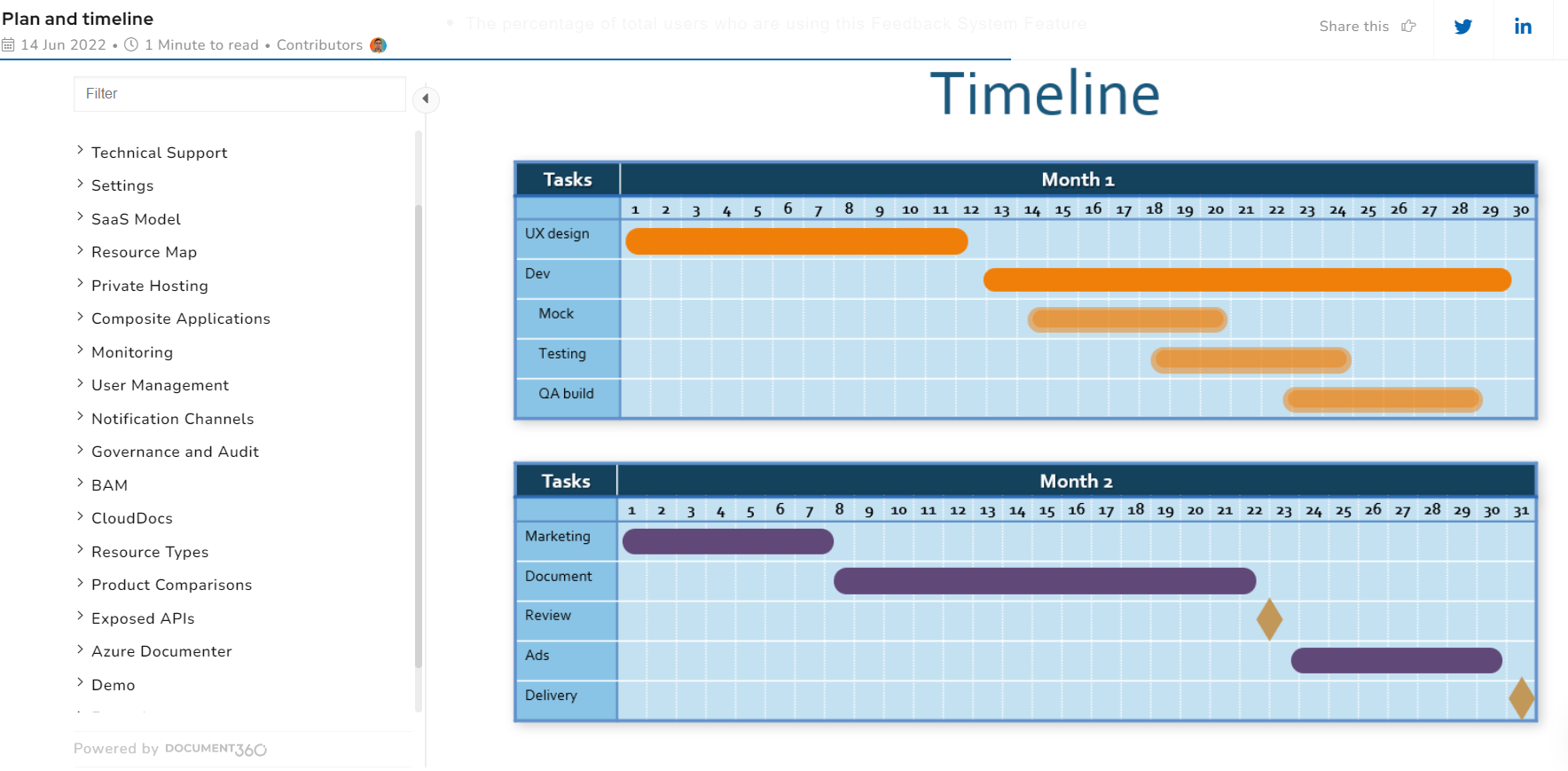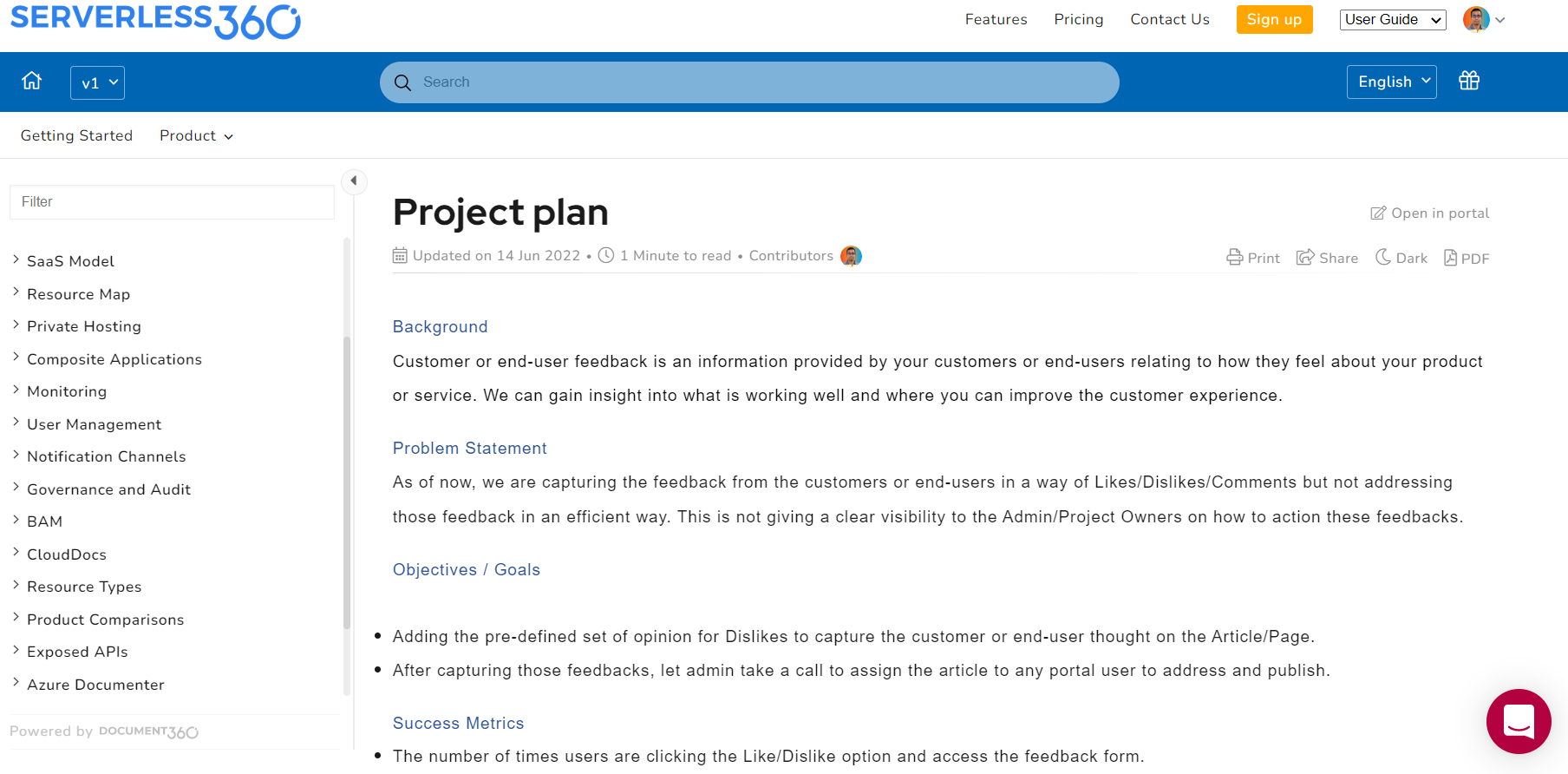Launching a new project is exciting. You’re in a race to get started and implement this project which you are sure will make a huge difference to your business. But wait.
First, you need to create robust product requirement documentation that clearly defines your goals and the scope of your work. The success of a project is highly dependent on the thoroughness of documentation which gives a project direction and accountability.
With project documentation in place, there will be fewer unpleasant surprises concerning the project. Everyone on the project team is on the same page and has greater visibility into the nature of the project.
What is Project Documentation?
Project documentation is the collection of all the documents relating to a project, containing core project specifications, goals to aim for, budgets, risks, and many more subjects that are vital to know about. Documentation can be consulted by team members when they want to find out the status of the project, what work still needs to be completed, or client requirements.
If you create project documents, the project has transparency and everyone is working from the same playbook. You can track how well the project is going and whether it is meeting requirements. If someone has a question about a previous stage of the project, you can check the documentation records for a definitive answer.

Benefits of Project Documentation
There may be Project Managers out there who feel like they don’t have time to invest in making any kind of project document. It’s hard enough to get a project off the ground without having to create numerous documents that may or may not get read.
We’re here to tell you that project documentation has numerous benefits.
Keep project tasks and progress traceable
When you have thorough project management documentation, the roles and responsibilities of each team member are clearly defined. The project tasks and progress are traceable as you know who is supposed to complete what work by what deadline. This means you can track the project much more effectively and understand whether you are on target.
Improve communication between stakeholders and the team
Project documentation makes your assumptions about a project explicit. Stakeholders can understand what a project involves, how much it’s going to cost and how long it’s going to take. Any information relating to the project is readily available so that clear communication is made possible. Changes to the project are immediately conveyed so that stakeholders are always kept up-to-date on the status of the project.
Describe the methodologies and techniques beforehand
When you define your project documentation, you can outline the methodologies and techniques you are going to use beforehand which will lead to a more successful project. Documenting your methodologies means everyone can follow along and they know what to expect, because your project is more consistent.
Define and assign responsibilities with more accuracy
Project documentation allows you to clearly state who is assigned which tasks and ultimately responsible for which deliverables. When someone wants to ask a question about the project, they can easily see who is taking care of the relevant aspect and employees also spend less time duplicating work. Tasks don’t fall through the cracks as everyone knows who should be delivering what.
Improve deliverable and success rate
If your team knows what the deliverables are then they are more likely to be able to meet their targets. They can continually refer back to the documentation to find out the goals of the project and ensure that they are on track. Deliverables are given milestones and timelines to ensure that the team is held accountable and able to complete the project successfully.
Enhance productivity
Teams are more productive when they have access to the latest project documentation. They know what is within and without their scope of work and are better placed to meet the demands placed on the project team. They know which tasks are the highest priority and are more able to balance their workload. Projects are completed more quickly as everyone is working at full capacity with an understanding of their role in the process.
Mitigate the risk of losing information
Documenting your project means you are much less likely to lose information that could be valuable later down the line. It’s easy to forget what was said in meetings and projects become confused as everyone is relying on verbal communication to get things done. When you later want to look back on a project and learn from it, you have a written record of what took place.
Types of Project Documentation
Project Charter
The project charter is the foundation stone of your project documentation that communicates the scope of your project. It outlines the project’s objectives, the stakeholders who will be participating in the project, and who will be responsible for what. The project charter is created at the start of a project’s lifecycle and is continually referenced as the project unfolds.
Statement of Work (SOW)
A statement of work is more detailed than a project charter and it contains a project’s specifications. The statement of work details the project’s deliverables, timelines, and budgets and it may be exchanged between a company and a client to act as an informal contract for the work to be undertaken.
 Example for Project Timeline Documentation
Example for Project Timeline Documentation
Leave no room for errors by documenting your procedures!
Book a Demo
Requirement Documentation
Requirement documentation explains clearly what the end result of the project will or will not do. The product has a particular purpose and must achieve specific ends in order to fulfill the needs of a certain user group.
Stakeholder Communication
Stakeholder communication outlines procedures relating to how your project team will communicate with stakeholders during the project’s lifecycle. It explains in detail exactly how communication will occur, from the channels used to communicate to the frequency of communication.
Change Management
When changes need to be made to the initial project plan they should be asked for and documented in the change management log. This keeps track of all the alterations to a project and includes the reason for the requested change, plus the person who is responsible for asking for the change.
Risk Analytics and Documentation
In risk analytics you should include all the potential risks of your project and their likelihood of occurring as part of your risk management plan, and what you will do to prevent them.
Issue Log
Issue logs are lists that help you stay on top of project issues as they come up and understand the impact that they have on the project. You record when the issue happened, a description of the issue and the action required and by whom.
How to Create Project Documentation?
We’ll talk you through how to make project documentation in six simple steps.
Step 1: Collect all requirements and related in a central repository
First of all, your project documentation needs to be collected in one place where team members and other stakeholders can easily access it. You might begin your project documentation process with documents spread out all over the place, in email chains, Word docs, Slack messages, PDF files, and more. It’s vital to bring all your documentation into a centralized repository which will function as a single source of truth that employees can check whenever they have a question.
Step 2: Be descriptive of the process and stages of the project
Next, make sure you give detailed descriptions of the project management process and the stages of the project. The different stages of the project management process all require different types of documents, ranging from planning to execution to completion. For example, your project charter is something that will be written at the beginning of the project while your issue log will be created and updated throughout the project lifecycle.
Step 3: Organize the information by stages and topics
Once you’ve created your project documentation, use your project documentation tool to organize the information into stages and topics. Different types of documents like your project status updates and project charter belong in different sections depending on what stage of the project planning process they’re at.
Step 4: Collaborate with your team on reviews
Your project documentation should be a team effort. Even if you’re a Project Manager tasked with creating a whole body of project documentation, you can benefit from the contributions of your team on reviews that help improve your documentation. They can tell you what is unclear, what is missing from your project documentation, and anything that is out-of-date. Incorrect documentation can damage the credibility of your project and confuse your team members, so reviews are essential.
Step 5: Publish the documents, add tags and indexing
Once you’ve got your project documentation up to a good standard, publish it in a documentation portal and make sure you add tags and index it with search. Your documentation should be easy to find by anyone who is searching for it and your documentation should show related articles for better content discovery.
Step 6: Maintain the documentation and update it
This is the final step in how to prepare documentation for a project. Your project documentation is a living entity that must be continually updated and maintained for comprehensiveness and freshness. Set aside an hour for every work to go through your documentation and identify documents that could benefit from revision. Keep certain documents updated like your issue log or your change management log.
Also read: External Documentation: Best Practices, Tips & Examples
Best Practices in Writing Project Documentation
Define the scope of the project
You must clearly lay out the terms of the project, defining what is within the scope of the project and what lies outside it. This guards against scope creep and ensure everyone knows what the project involves and what success looks like. A project could go on forever if you just keep adding things to do to the scope.
 Example for Scope of Project Plan Documentation
Example for Scope of Project Plan Documentation
An intuitive project documentation software to easily add your content and integrate it with any application. Give Document360 a try!
GET STARTED
Set up a team (contributors, reviewers, editor or publisher)
Bring a team together to collaborate on your project documentation. Your team must consist of contributors, reviews, editors and publishers so they can take your content through the entire lifecycle. Everyone has a different role to play in bringing your documentation through to completion and ensuring that it is created to the highest standard.
Identify topics and sub-topics
Identify all the areas in which your project documentation could be usefully divided into topics and sub-topics. Make a plan of all the documentation you want to create and systematically work your way through going topic by topic. Your documentation should be clearly organized in a systematized way so anyone can browse through your content to find what they need.
Be specific about expected results
You must clearly explain what you hope to achieve with your project so your team knows when your project has been successful. Specifically layout the expected results and when you think you will get there, with a solid definition of done. Articulate the final product in the most descriptive terms possible and make it clear to everyone involved.
Document technical parameters and environment requirements
If you’re working on a technical project then you’re going to need to document technical parameters and environment requirements. Make sure everyone knows the specifications needed and the technologies that will be involved in executing your project. Really go into detail about the requirements so there is no doubt in anyone’s mind about the project’s dependencies.
Compose project deliverable
Get really clear about what is going to be delivered at the end of the project after your definition of done. This could be a new mobile app or a new community center. Whatever your deliverable, get clear about what it is and how it will benefit the company when you’ve built it. What will be the tangible results of your project and how will you know when it has been delivered?
Assess Quality, Scope, Risk, Training, and Cost
When documenting your project, assess:
- Quality – how will you ensure the quality of your project outcome?
- Scope – what is included in the boundaries of the project and what isn’t?
- Risk – what are the natural risks associated with your project and how will you tackle them?
- Training – what training is required to build the necessary skills for the completion of the project?
- Cost – how much will the project cost and what is the budget for it?
Refresh and update documents with version history
Use a documentation tool that allows you to store the version history for every document so you can refer back to it whenever necessary. Regular updates to your project documentation may result in a need to revert back to previous versions sometimes as you might need to remind yourself of the history of the project
Choosing the Right Software for Project Documentation
If you’re engaging in the documentation of a project, you’ll need to have the right tools in place to store your documents and share them with your team. A good choice for project documentation is a company knowledge base, which is centrally managed by a team of contributors.
Document360 is one such tool, and it will help you get up and running with your project documentation using its stylish and intuitive interface. You can use the WYSIWYG or the markdown editor, and the category manager to organize your content into topics. The simple drag-and-drop UI allows you to rearrange categories with just a few clicks.

You can build a private, login-required, knowledge base for employees or clients so your documentation is always secure. Take advantage of Document360’s integrations and extensions with popular apps so you can expand the functionality of your knowledge base.
With Document360, you can view version history between multiple article versions or roll back to a prior version. You don’t have to worry about accidentally overwriting the content with automatic source control.
Also Read: Software Requirements Document (SRD): Benefits & Examples
Wrapping up
It’s clear by now that if you are a Project Manager, your project is in desperate need of documentation to bring clarity and organization to your team. If you’re running a small project, you won’t need too much documentation or you might find your team getting weighed down with documents. Larger projects need more documentation naturally, as they are more complex and involve more moving parts.
Whatever your project documentation needs, make sure you get started with a tool like Document360, which will help you create and share your documents with your team. You can keep all your documents in one centralized location and team members can take advantage of a powerful search to find the content they need.
Frequently Asked Questions
-
What is project documentation?
Project documentation is a collection of essential documents that outline a project’s goals, scope, budget, risks, and methodologies. It ensures transparency, accountability, and better project management.
-
Why is project documentation important?
It helps track project progress, improves stakeholder communication, defines responsibilities, enhances productivity, and reduces risks by keeping all essential information in one place.
-
What are the key types of project documentation?
Common types include the project charter, statement of work, requirement documentation, stakeholder communication plan, change management log, and risk documentation.
-
What tool can help with project documentation?
Document360 is a great tool for creating, managing, and organizing project documentation. It offers easy collaboration, searchability, and version control.




 –
– 

